Dry goods sharing: Clean the fiber fusion splicer like brushing your teeth every day
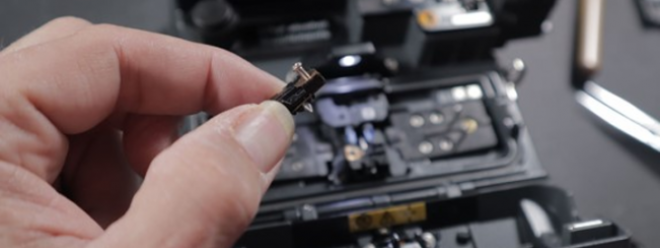
By DAVE SCHUMAN -America Ilsintech
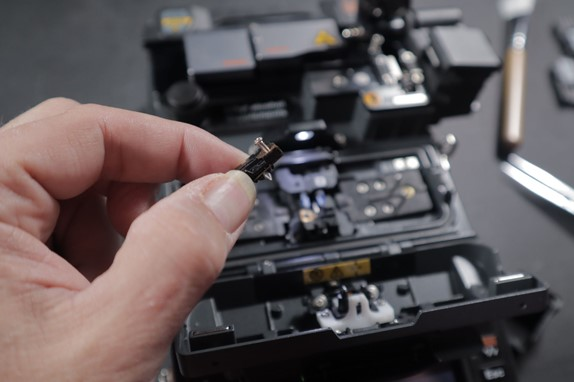
via America Ilsintech
Whenever we go to the dental clinic to clean our teeth, the doctor will advise us: We must brush our teeth with dental floss and at least twice a day to avoid the accumulation of plaque and bacteria that may be harmful to teeth and even health. Keep teeth clean, because they will last a lifetime. For you!
Believe it or not, the same advice applies to fusion splicers. Nowadays, fiber fusion splicing is much easier as a manual technique than it was 20 years ago, when fusion splicing was more like a specialized skill. Technology has developed, and now fiber fusion splicing has become an important part of any site, coal mine, data center, etc. Optical fiber is no longer restricted by geographic location. Now, no matter where you are, you can have fiber.
Fiber optic technicians rely heavily on their fusion splicers and hope they can work stably every day. If the fusion splicer fails or is damaged, the technician will lose a whole day of productivity. So, how should you avoid these costly and frustrating problems? It's simple, clean and maintain your fusion splicer every day to ensure that tomorrow is as successful as today.
When I often meet technicians and check their machines, I can basically tell what kind of technicians they are (although some people use second-hand or borrowed machines). The time required to clean the fusion splicer every day is roughly the same as the time to clean the teeth with dental floss, which is 3-5 minutes or less.
If you don't clean the machine every day, debris will accumulate in certain areas and negatively affect the performance of the machine. When asked how often they clean the machine, the most common answer I get from a technician is: "I try to clean it once a day, but it has been several weeks."
If the fusion splicer is cleaned every day, 95-99% of dust, debris and fiber fragments will be removed from the machine. In contrast, if you clean once a week, you can only remove 90-95%, and accumulation has already begun.
Initially, you may notice that the estimated loss readings after splicing start to increase or become inconsistent. However, if you never (or rarely) clean the fusion splicer, within 3-5 months, you will begin to experience obvious alignment, cracking and even fusing problems.
Daily cleaning
Let us review the causes and effects of poor fusion splicer hygiene, and how to solve these problems by cleaning the machine every day.
Environmental dust
Dust is most common in outdoor applications, such as household fiber optics, coal mines, oil refineries, and large indoor spaces (such as data centers with constant ventilation and air circulation). Once the fusion splicer is taken out of the packaging box, during use, particles and dust in the wind and air will cover the exposed parts and enter the fusion chamber and cutting knife. If it is a windy day, the fusion splicer will be covered by a layer of fine dust, which will hinder the area where it works best when it is completely cleaned. Spending a few minutes at the end of the day to brush the entire machine and your cutting knife (whether you are a standalone or all-in-one) can alleviate this accumulation.
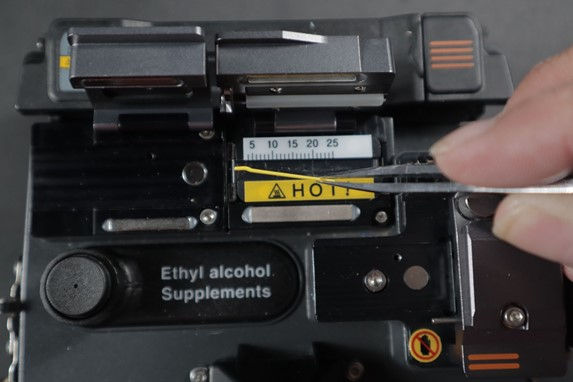
Remove fiber debris and fiber jacket debris via America Ilsintech
Fiber and fiber jacket debris-depending on the position of the cleaver, the fiber and fiber jacket coating may be blown off or transferred to or on the fusion splicer. They need to be removed safely and quickly with tweezers, as they may get stuck in the alignment system, fusion chamber, or sleeve heating furnace. Once remaining in these areas, it is difficult for the naked eye to find the debris, and the heat from the melting chamber or heater will melt the debris onto the fusion splicer, making it difficult to remove and increase over time.
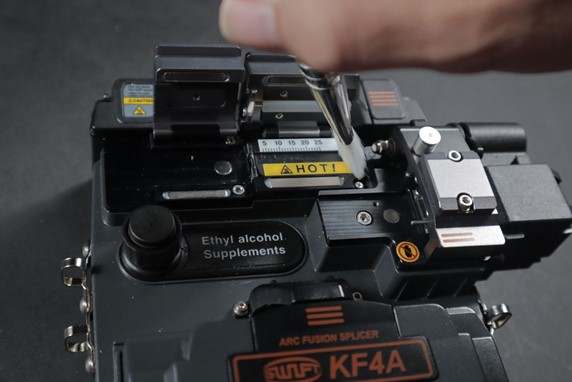
Clean the hot stripper under the door test via America Ilsintech
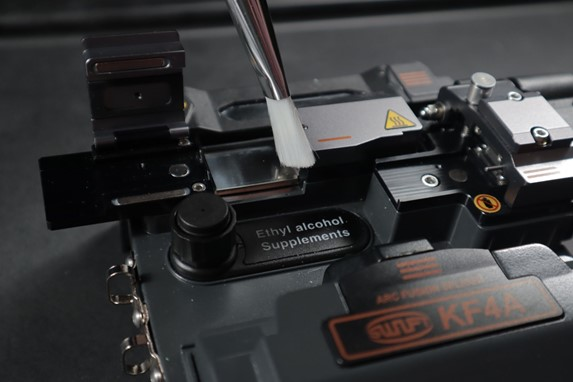
Clean up debris and dust from the sheath at the opening via America Ilsintech
Thermal peeler-If you have a multifunctional machine, it has a built-in thermal peeler. Open the door with the stripper closed, and then brush the underside of the door. Make sure to brush all metal and rubber pads and the bottom surface clean. Next, turn on the thermal stripper and make sure not to let the brush touch the heated surface, as it will melt the debris in the brush bristles back to the heater board. Close the door of the stripper, and use a brush and tweezers to remove debris and dust from the sheath at the opening to ensure it is clean. Now that you have finished this area, please reopen the stripper and then close it.
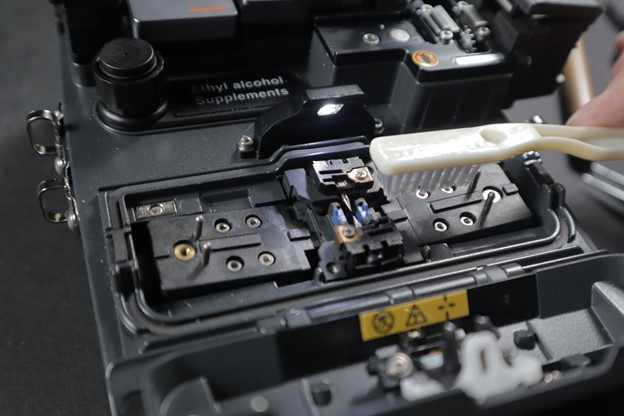
Cleaning the V-groove via America Ilsintech
Melting chamber-Below the windshield is the area where fusion occurs-the melting chamber. Two pieces of insulating glass melted together, and the hole was retained, allowing light to pass through it. In the fusion chamber, there is a "V-shaped groove", and the end of the fiber is located between two electrodes (conical, pointed metal parts) that send high-power charges around the glass to fuse the glass together. After putting the optical fiber or connector into the melting chamber, it has been cleaned with a fiber wiper and fiber cleaner, then it is cleaved and placed directly in the melting chamber to be placed on the V-groove. Even if it has been cleaned, the fibers can bring dust or debris into the room as easily as the wind.
Fortunately, most high-quality fusion splicers have a solution, called fast burning or clean burning. When the windshield is closed, a short-term low-voltage discharge will automatically start to burn off any remaining debris, lint, hair or fiber. This is a good thing, or it may turn into a bad thing, because this process cannot bring additional pollutants. Lightning will produce
Produce very small fragments (small in size and invisible in appearance), they will fall into the V-shaped groove, the floor of the condenser room, and may even fall on the camera lens. Wrong cleaning will cause debris to accumulate in the most sensitive area of the fusion splicer. At the end of each day, the melting chamber needs to be scrubbed well, and some technicians need to scrub it several times a day. If you cannot clean the V-groove every time you perform welding, then the clean burn and actual fuse burning will start to bake the debris into the V-groove, making it more difficult to remove. Over time, this may cause greater losses to the welding results, and since most V-grooves are made of ceramic, you cannot scratch them at will. Therefore, machines that already have contaminants will require maintenance and professional cleaning.
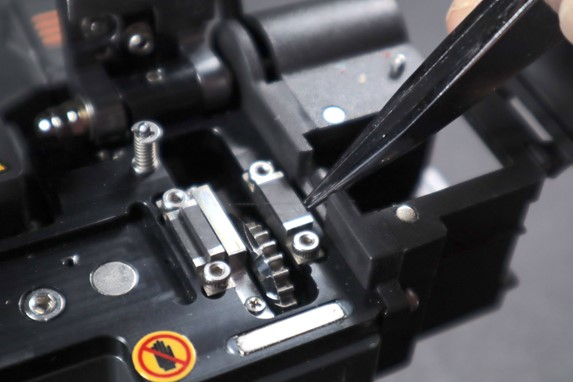
Cleaning the V-groove via America Ilsintech
Heating oven-Before attempting to clean, make sure that the oven has completely cooled down. Open the heater door and brush it clean. If debris adheres to the base of the heater, use the back of a brush or tweezers to carefully remove it to avoid scratching or damaging the surface.
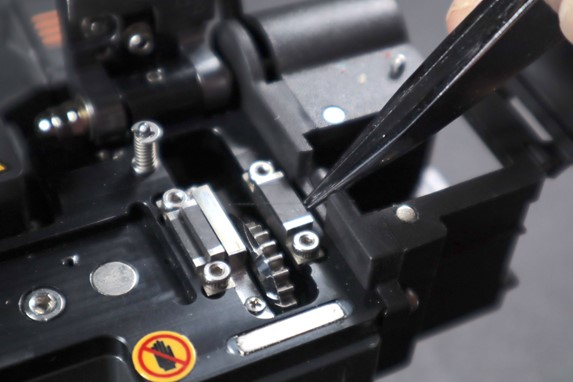
Cleaning the cutting knife via America Ilsintech
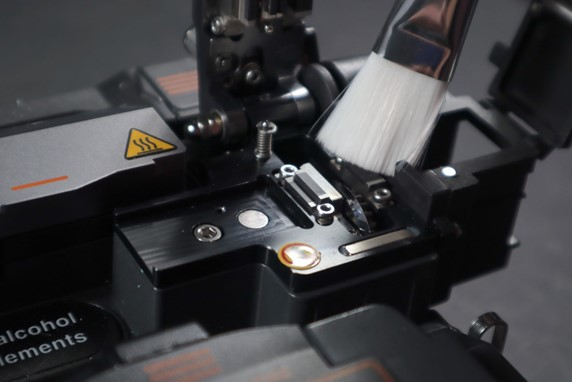
Cleaning the cutting knife via America Ilsintech
Cutting knife-A good cutting angle is the way to get a successful splicing result, and a well-maintained, clean cutting knife equals success. If you have a chip basket, you should empty it every day and make sure to discard the chips safely to avoid harm to anyone who handles the trash. Currently, there are two types of cutting knives, they can be built into the board like our multi-function, or they can be independent units.
The fixed blade cleaver uses the same point on the blade to cut the optical fiber until the technician manually moves the blade. Generally, (excluding damage) each of these 16 positions is suitable for 2-3000 cuts before rotation is required.
The rotary blade cutter has up to 25 positions, moves after each cut, and can perform 75,000 cuts without user intervention.
Most fusion splicers will display the cutting angle before splicing. The technician must monitor the steady rise of the cutting angle of the fixed blade unit and move the blade when the blade continues to be high. Unless the blade cannot be fixed, the rotary blade cutter should be usable
many years. The method of cleaning the cutting knife is: first check the cutting knife, then use tweezers to remove lint or coat debris, then empty the chip box (if any), and then brush it completely. Do not let any rubble fall into and scratch the blade. Over time, this may affect the operation of the cutter mechanism! If the cutter is not installed on the fusion splicer, you can use compressed air with goggles to remove all debris into the trash can.
Clean weekly/every two months
If you want to keep it clean once a day or twice a week, you should perform a deeper cleaning, including other areas of the machine. This will require some fiber cleaners (only 99.99% alcohol or approved fiber cleaners can be used).
Perform a thorough daily cleaning-Perform daily cleaning, but thoroughly, and carefully inspect all surfaces. Make sure the dust passage of the windshield built into the main body of the fusion splicer and any other areas that you may not clean every day.
Wipe-This step requires some restraint, because "should be dry rather than wet". Use enough fiber cleaner or 99.99%
Alcohol wets the fiber wipe to make it moist. When wiping the surface, do not leave any moisture on the surface. Make sure that the heater and thermal stripper are turned off and cooled down. When cleaning every day, wipe off all surfaces that are normally brushed. Pay special attention to the rubber pads that hold the fiber in the thermal stripper and cutter. Next, in the melting chamber, clean the V-shaped groove with a clean damp paper towel. Owning a jewelry magnifying glass can help you view the debris on the V-groove, as they are usually smaller than sand grains. Apply pressure when cleaning the V-groove, because if it is not cleaned regularly, the debris will bake to them. Wipe and clean the remaining surfaces (except the electrodes) under the windshield again with a damp paper towel.
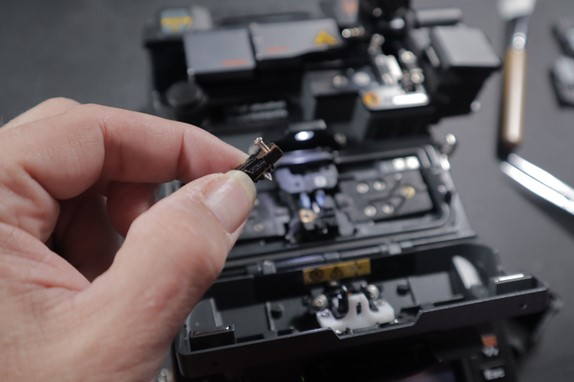
Carefully remove the electrodes via America Ilsintech
Electrode cleaning-remove the electrode. Normally, a screwdriver is required, but do not touch the metal electrode itself because it will transfer oil that may affect its performance. Take them out and clean them with a damp paper towel, then put them aside, making sure to put them back in the correct position after cleaning the camera (as shown below).
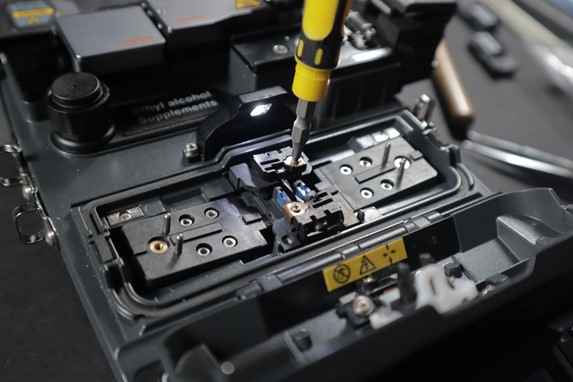
Remove the electrodes on the camera via America Ilsintech
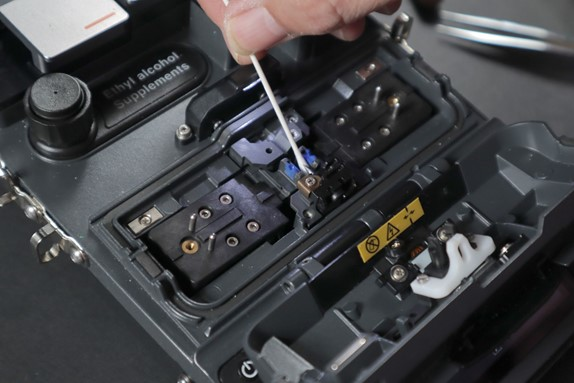
Use a lint-free cotton swab to clean the lens via America Ilsintech
Clean the camera – for this, you will need a lint-free electronic swab. After removing the electrodes, you can look at the area below to find the camera lens. Only use a lint-free dry cotton swab to clean the lens surface in a circular motion. After the lens is cleaned, please replace the electrode, making sure not to touch the metal surface of the electrode.
Arc calibration-When the altitude, temperature or humidity changes, the arc calibration should be performed. The fusion splicer has a sensor that can adjust the arc sent to the electrode according to environmental conditions. When removing the electrodes, an arc calibration should also be performed to ensure that the fusion splicer is working properly, because the arc calibration will test all system components. Always use single-mode fiber for arc calibration.
Clean the box-If your equipment is beyond the scope of the fusion splicer, you should clean the box occasionally and clean it with a multifunctional cleaner to remove dust or debris that may be transferred to the fusion splicer or cutter.
Non-warranty/warranty maintenance
All Americas Ilsintech fusion splicers come with a 36-month warranty, which includes two free maintenance/software upgrade visits. Some of our competitors are valued at more than US$300 for these products. You can call America Ilsintech to get RMA#, we will clean your splicer for free, upgrade the software and solve any minor problems. If more problems are found, we will prepare an estimated cost for any repairs that are not covered by the warranty. Items not covered by the warranty are usually physical damage or repair damage caused by user error. (Compiled by Qianjia.com)
DAVE SCHUMAN is VP of Service Provider Markets, USA and Canada at America Ilsintech.
【Editor's Choice】